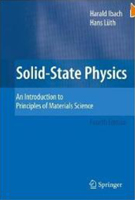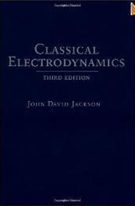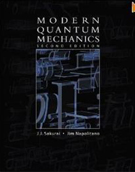Computational Physics: Yasuhiko SENTOKU and Takayoshi SANO
A goal of this class is improving students' computer literacy and programing skill/knowledge, which are indispensable for research or future work. Starting with the basics of numerical techniques, we will learn computational techniques by solving actual physics problems, like, for example, calculating a satellite orbit, nuclear fission reactions, electromagnetic wave propagation, etc. Students are expected to write programs by themselves using a programming language such as Fortran, C, or C++. We will also learn how to use a Linux system and how to visualize numerical results using graphic tools.
Condensed Matter Theory: Keith SLEVIN
The physical properties of solids, such as whether they are metals, insulators or semiconductors, or whether they are magnetic, superconducting etc., are determined by their electronic structure. The goal of this course is to explain the basic concepts needed to understand the electronic structure of solids and the consequences for their physical properties.

Cosmology: Kentaro NAGAMINE
This course will cover the foundations of modern cosmology which is based on the General Relativity theory, and how the current concordance cosmological model has been established through the interactions between theory and astrophysical observations. We will cover the following topics: Big Bang theory, Friedmann models, Thermal history of the Universe, Inflationary theory, Jeans theory, Cosmological perturbation theory, Nonlinear structure formation, Galaxy clustering, Cosmic microwave background radiation, Reionization of the universe, Near-field cosmology, and High-redshift universe and frontiers in observational cosmology. The grades will be determined by student participation level to the class and homework assignments.
Electrodynamics: Luca BAIOTTI
This course aims at teaching the basis of electrodynamics and its applications, in order to standardize the background knowledge of students coming from different academic experiences. The lectures will include the study of the Maxwell equations, electrostatics, magnetostatics, electromagnetic radiation. This course has been merged with the Quantum Mechanics course and has become "Electrodynamics and Quantum Mechanics".

High Energy Astrophysics: Yoshiyuki INOUE
High energy astrophysics is a field studying cosmic high energy phenomena. This field grows rapidly together with the development of multi-messenger astronomy. In this course, we aim at understanding the basic physical processes involved in various cosmic high energy phenomena. Specifically, bremsstrahlung, synchrotron, inverse Compton scattering, hadronic interactions, nuclear gamma-ray lines, cosmic rays, turbulent acceleration, diffusive shock acceleration, reconnection acceleration, and relativistic jets. The grades will be determined by student participation level to the class and homework assignments.
High Energy Physics: Masaharu AOKI
This course is teaching the physics and experimental methods of high energy physics.
Nuclear Physics in the Universe: Sun Young RYU
We seek to re-construct the basic understanding of Nuclear Physics from a rather broad view point by combining the individual knowledge. Applications to nuclear astrophysics is also discussed.
Optical Properties of Matter: Shin-ichi KIMURA and Hiroshi WATANABE
One of the methods to investigate the electronic properties of solids is an optical spectroscopy in which we introduce light into a solid and detect reflected (transmitted) or scattered light. Since light is reflected or scattered as a result of interaction with various elementary excitations (phonon, plasmon, exciton etc.) within a solid, we can obtain the information about these elementary excitations by observing the reflected light. In this lecture, the basic concept of optical spectroscopy such as the relation between dielectric function and elementary excitations is reviewed.
Quantum Field Theory I: Tetsuya ONOGI
Quantum field theory is a universal language to describe a wide area in physics including particle physics, statistical physics, and condensed matter physics. We will learn here the basics of quantum field theory through free field theories and master how to evaluate various physical quantities such as scattering amplitudes.
Quantum Field Theory II: Ryosuke SATO
Students learn basics of field theory, including non-Abelian gauge theory, spontaneous symmetry breaking, standard model of elementary particles, and soliton.
Quantum Mechanics: Luca BAIOTTI
This course aims at teaching the basis of quantum mechanics, in order to standardize the background knowledge of students coming from different academic experiences. It will cover the mathematical formalism and fundamental physical concepts required to describe the behavior of microscopic physical systems, including equations of motion, symmetries and conservation laws, basic applications of wave-mechanics, Schroedinger equation and uncertainty principle, harmonic oscillator, theory of angular momentum and rotation group. This course has been merged with the Electrodynamics course and has become "Electrodynamics and Quantum Mechanics".

Quantum Many-Body Systems:
This lecture series explores contemporary topics in the theoretical research of solid-state physics. It covers an introduction to the basics of many-body systems, density functional theory, and the recent integration of machine learning into solid-state physics. During the lectures, participants will be required to read relevant textbook chapters and research papers to enhance their understanding of the subjects discussed.
Radiation Science in the Environment: Masaomi TAKAHASHI, Michio OKADA
Students learn the roles and influences of radiation in our life from an integrated point of view of natural and human sciences. The course study provides the basics of physics, chemistry, biology and sociology necessary for this goal. After learning these in ordinary lectures, students will visit Fukushima, including the damaged power plant. They experience laboratory study for measuring radiation by using actual samples. They also discuss the problems of radiation with local people.
Solid State Theory: Kazuhiko KUROKI
This course aims at giving an introduction to many-body theory of interacting electron systems. Diagrammatic techiques are introduced to evaluate the thermodynamic potentials as well as the Green function in a perturbational manner. Applications to systems such as the electron gas are also provided.
Synchrotron Radiation Spectroscopy: Shin-ichi KIMURA
Synchrotron radiation (SR) is a powerful light source in the energy/wavelength region from infrared to X-ray. Nowadays, SR is widely used to obtain the microscopic information of electronic and crystal structures of not only condensed-matters but also biological materials. The technology of SR beamlines and analysis methods is ever-progressing. The goal of this course is to understand the methods of SR spectroscopy and to give an overview of recent topics in SR.
Theoretical Particle Physics I: Satoshi YAMAGUCHI
First physics of spontaneous symmetry breaking, electroweak gauge theory and the Higgs mechanism are studied. We then learn the standard model and related physics. Finally, some ideas solving the problems beyond the standard model, such as baryon asymmetry of the universe, neutrino oscillation and origin of dark matter, will be discussed.
Theoretical Particle Physics II: Tatsuma NISHIOKA
First physics of spontaneous symmetry breaking, electroweak gauge theory and the Higgs mechanism are studied. We then learn the standard model and related physics. Finally, some ideas solving the problems beyond the standard model, such as baryon asymmetry of the universe, neutrino oscillation and origin of dark matter, will be discussed.
